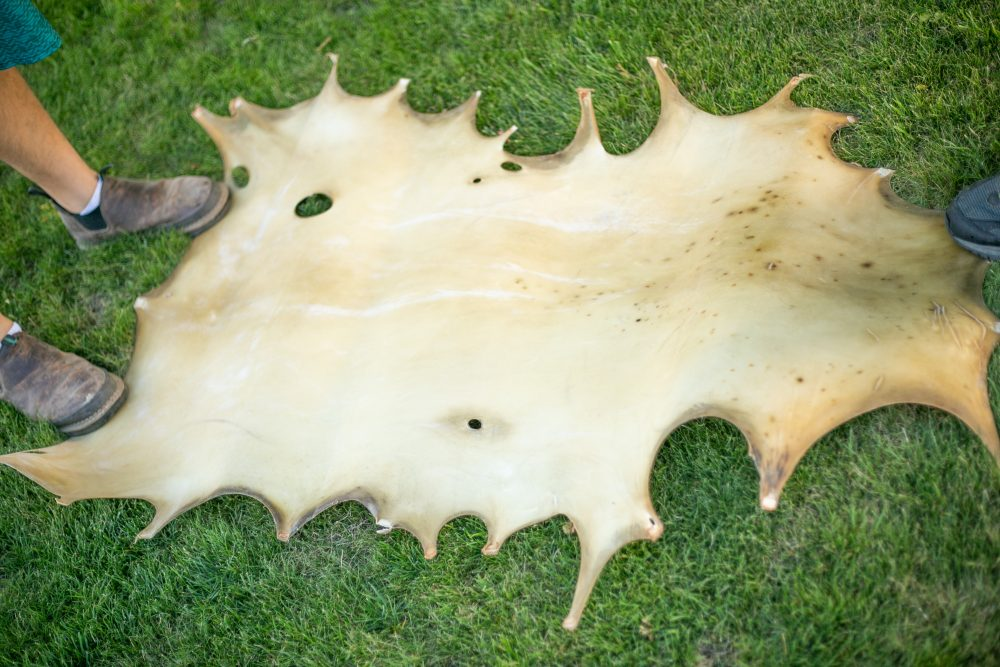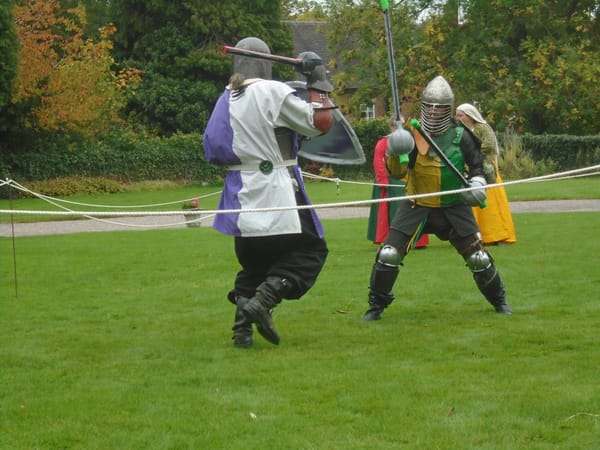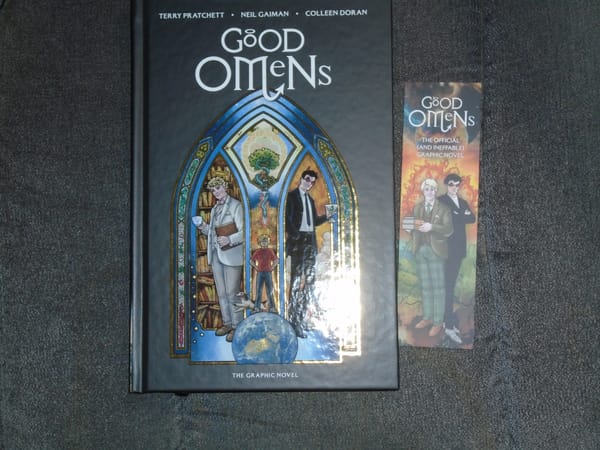Run and hide

On Saturday I went to my first actual physical SCA meeting; it was the Flintmoot, which is the monthly meeting of our shire (our SCA shire is called Flintheath, which is a little puzzling since it contains very little flint and no heath as far as I'm aware; it covers East Anglia, more or less), and oddly enough it takes place in the large village (or possibly small town) where I used to live. I had no idea at the time that there was any SCA action going on in my vicinity, but then I couldn't get out much because I had Sidney, so it probably wouldn't have made a difference if I had.
Flintmoot takes place in the Tillage Hall. Nope, that is not a typo. I thought it was too, but the sign outside clearly says "tillage". It - or, at least, the part of it that I was at, of which more anon - consists of a lot of people sitting round tables, maybe a third to a half of them in mediaeval garb, passing round nibbles, chatting, and in many cases doing various crafts. And on this particular occasion we had people giving ten-minute talks about those crafts; I'd brought my netting, so I was quite happy to give a little talk about that. There were various kinds of embroidery. There was the famous hand-woven velvet cloak, which I got to see up close and personal, but unfortunately the weaver was standing with her back to me so I couldn't hear a lot of what she said about the technique; I did, however, gather that only one shuttle is required, which is somewhat mystifying to me because inspection showed that the pile consisted of very fine (silk?) threads woven into a base cloth made with a much coarser fibre, though it was astonishingly evenly woven. Unfortunately, right in the middle of my netting talk Sibyl decided that this was a good time to blow, because she has no manners whatsoever, so I had to be taken home in a hurry and missed the business part of the meeting. I did, I hasten to add, manage to finish the talk and even take questions, but I'm not entirely sure how.
However, at least I had not missed Felicitas. Felicitas (that's her SCA name) is another fairly new member, and she does various things, one of which is tanning leather. She came up to the front with a plastic bag tied tightly at the neck, and warned everyone that the contents were going to stink. Fortunately I was between her and the main doors, and if there was any draught it was coming from that direction, so I was upwind of it and caught no whiff; had I done so I think I'd have been extremely queasy, because it was queasy-making enough just seeing the stuff and hearing her talk about it. It was, despite that, also very interesting, which is why I want to talk about it here.
Felicitas knows someone who shoots deer. I'm not familiar with shooting deer, but I assume there is some kind of cull in operation (I'm aware that there are a lot more muntjac round here than you'd think, in particular). So this bloke gave her a couple of deer skins, and she got one of them out to show us. It looked very much like the feature photo, but smaller, because it was a muntjac; it was this sad flat white thing, with a few little holes round the edges where she'd stretched it out on a frame. You have to scrape the inside (I don't want to think about that bit too hard), then soak it in a solution of lime to get rid of the fur. Felicitas thinks she soaked that particular hide a little too long and it has somewhat compromised the integrity of the hide itself, so she's planning to use it for parchment rather than leather. To make parchment, you scrape it very thin and then you rub chalk into it, which both further whitens it and makes the surface take ink better (it stays in one place and forms letters, rather than spreading out into a puddle).
She then reached into the bag again and produced several pieces of experimental leather. Apparently the most popular method of tanning leather (at least until modern chemical processes were invented) was to use oak bark; and English leather was much in demand, because English oak bark was very good for tanning. However, there aren't so many oaks around as there used to be and it's not a good idea to strip bark from a living tree, so it's just as well from Felicitas' point of view that you can use other things. There are several plants that contain a good supply of tannins; what she used was willow bark. Someone conveniently cut down a willow tree near her flat and left the wood free for anyone to take. Felicitas wasn't interested in the wood, but she took all the bark she could carry. She explained that, historically, what you did was to dig a large pit, fill it with alternate layers of bark and rawhide, pour water on top of the whole lot, and then leave it to steep for about eight months. However, when you live in a small flat, that is not really practicable, so what she did was to boil the hide with the bark and then let it dry.
The first piece of leather she made in this way turned out very brittle, and she said she now realised what she should have been doing was regularly working it as it dried. The subsequent pieces, therefore, were a lot better in this respect, though some of them were very thin (one of them quite thin enough to let the light through), so not about to be made into a handy pouch. You also, as it turns out, have to oil it, though I can't remember whether she said you had to do that while it was drying or afterwards; in any case she used first cooking oil and then linseed oil, and was not entirely happy with the results. She said she was going to use lard next time, because she thought leather would probably respond better to animal fats. She also said the linseed oil stank worse than the tanning, which I suspect is a matter of personal opinion. I've smelt linseed oil (and if you've ever used oil paints, so have you). It's quite a strong smell, but it's not a terrible one; whereas I've never liked any kind of dead-animal smells. I always thought butchers' shops smelt a lot worse than oil paints.
It was all very interesting, but I have to say I was a little sorry Taliesin wasn't there. Taliesin is our resident metalworker. If he'd given a talk, that would have been equally fascinating, but without the squick factor!




